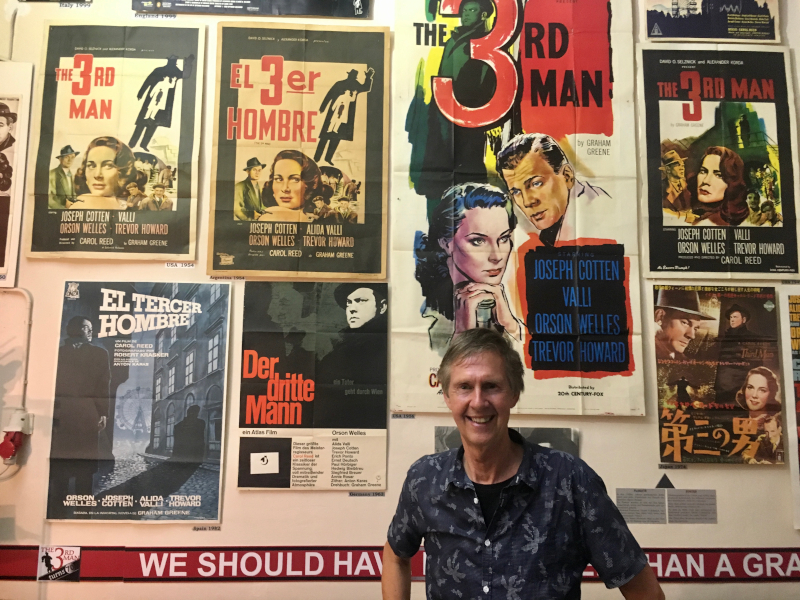“I am really upset that my government cheated me. We were never taught anything about the Second World War,” explained Gerhard Strassgschwandtner. Now in his late 50s, Strassgschwandtner decided on an unconventional way to retaliate against what he saw as an educational injustice: he opened a museum dedicated to a single film about postwar Vienna.
A poll of 1,000 top critics, actors and filmmakers by the British Film Institute ranked The Third Man, directed by Carol Reed, as the greatest movie in U.K. history. Released 70 years ago, in September 1949, it tells the story of an American gangster who sells black-market antibiotics in Vienna, a city in ruins, both physically and morally, in the immediate aftermath of the Second World War.
The Third Man Museum is about a kilometre from Vienna’s world-famous opera house. Its 16-room exhibit space is home to over 3,200 original objects, including movie posters, production scripts, still photos of Orson Welles, Joseph Cotten and other stars of the film, vintage cameras and the original zither that Anton Karas used for the film’s soundtrack. But it’s much more than a collection of memorabilia. “I used the movie, The Third Man, as a door-opener into a time frame of history, which is virtually unknown in Vienna: the Second World War,” remarked Strassgschwandtner.
Today, Vienna has been restored to its prewar glory, lined with palaces that were previously homes to emperors and museums converted from former apartments belonging to classical composers, such as Mozart, Beethoven and countless others. Nearly every block in the centre of the city seems to have a picturesque world-class cafe or bakery, often ornamented with Art Nouveau-painted facades, or centuries-old sculptures, many of which were used for site locations in The Third Man.
In the midst of the gorgeous cityscape, I was given a chilling reality-check of Vienna’s horrific past: a small bronze-coloured memorial plaque sits in the middle of the sidewalk, noting what happened to a family of Rosenbergs (no relation): Ethel and Oswald were deported from their apartments on Aug. 17, 1942, and murdered four days later at the Trostinets extermination camp, near Minsk.
“People (here) didn’t want to see reality, their own country’s misery; we are not so fond of it,” said Strassgschwandtner. But that is indeed one of his core missions – to portray some of Vienna’s darker history, something that couldn’t be more urgent in the wake of a 2019 survey by the Material Claims Conference, which found that 58 per cent of Austrians didn’t know that six million Jews were murdered during the Holocaust.
“It’s a matter of non-education,” he said. “The Allies did not focus on de-Nazification.” After the war, America was eager to have Austrians side with the West in the Cold War, allowing many Nazis to escape arrest by fleeing to South America. Strassgschwandtner finds his inspiration in philosopher Edmund Burke’s famous quote: “The only thing necessary for the triumph of evil is for good men to do nothing.”
Later that day, I met Thomas Soxberger, a historian of Jewish Vienna. We took a walk through Hoher Markt, with its famous Wedding Fountain, where the cafe scene near the end of The Third Man was shot. In 1949, the square was largely reduced to rubble. “The houses (in this neighbourhood) were destroyed during one of the last air raids of Vienna,” explained Soxberger, as he pointed to the beautifully reconstructed apartment buildings. “People in the Jewish community here were forced to work for the Nazis and were killed during these raids, as they weren’t allowed to enter the underground bunkers.”
The 1949 film portrays a city divided between occupying forces, turning a blind eye to corruption and crimes committed during the war, the breakdown of government institutions and the round-up of citizens who suddenly found themselves without proper residency papers.
The Third Man was written by Graham Greene and released as a feature film 70 years ago, but its message couldn’t be more resonant today.
